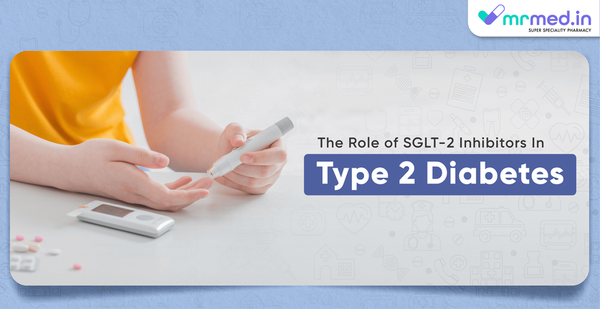Type 2 diabetes mellitus (T2DM), a chronic metabolic condition, is distinguished by high blood sugar and insulin resistance. One significant advancement in the treatment of T2DM over the years is the creation of sodium-glucose cotransporter-2 (SGLT-2) inhibitors. Forxiga 10mg Tablet, which contains dapagliflozin, was developed to treat diabetes and has fundamentally altered how glycemic control is handled. In this article, we look at the mechanisms through which SGLT-2 inhibitors improve glycemic control in persons with Type 2 diabetes.
What are SGLT-2 Inhibitors?
The sodium-glucose cotransporter-2 proteins in the kidneys are the target of a class of oral diabetic medications known as SGLT-2 inhibitors. Diabetes is associated with high blood glucose levels because of these transporters' normal ability to reabsorb glucose from the urine back into the circulation. SGLT-2 inhibitors facilitate the excretion of excess glucose through the urine by blocking this reabsorption process. SGLT-2 inhibitors are different from other glucose-lowering medications due to their unique manner of action.
Glucosuria: An Important Mechanism
In order to aid in diabetic control, SGLT-2 inhibitors generally work by generating glucosuria, or the presence of glucose in the urine. Due to the fact that these medications stop glucose from being reabsorbed in the renal tubules, they promote the body's ability to eliminate excess glucose. This offers a cutting-edge approach to managing hyperglycemia by directly lowering blood glucose levels. Because it doesn't require insulin to work and avoids hypoglycemia, a common concern in the management of diabetes, this mode of action is particularly advantageous.
Advantages of Weight Loss
Both patients and medical experts like how SGLT-2 inhibitors assist individuals lose weight in addition to lowering blood sugar. Because the excess glucose that is excreted in the urine also contains calories, there is a reduction in caloric intake. This outcome aids in weight reduction along with the body losing more fluid through increased urination. For people with T2DM who have obesity or weight gain due to insulin therapy, SGLT-2 inhibitors offer both glucose control and weight management.
Cardiorenal Defence
SGLT-2 inhibitors differ from traditional diabetes therapies in that they can provide cardiorenal protection. Clinical research has demonstrated that these inhibitors' cardiovascular benefits go beyond glucose control. They have been shown to lower the risk of cardiovascular death and even lower the likelihood of heart failure hospitalisations. Additionally, SGLT-2 inhibitors have renoprotective effects by slowing the progression of renal disease. Due to their cardiorenal benefits, they provide a substantial therapy choice, especially for patients with T2DM who are more vulnerable to cardiovascular issues.
Safety Record and Effects
SGLT-2 inhibitors can have side effects, just like any other medication, even though they are frequently well tolerated. Increased urination and thirst are regular adverse effects of the medication because of its diuretic action. However, these symptoms often improve over time. The presence of glucose in the urine system has been linked to reports of genital and urinary tract infections. Patients are advised to maintain proper hygiene and seek medical attention if these issues arise. Furthermore, SGLT-2 inhibitors may slightly drop blood pressure, which may be helpful for individuals who have hypertension but requires regular monitoring in those who are at danger of hypotension.
Individual Difference and Personalised Care
Although SGLT-2 inhibitors have shown tremendous results in many T2DM patients, it's important to keep in mind that every patient will respond to medication differently. Some people may have greater glucose-lowering results than others. Age, renal function, and the presence of other medical conditions can all affect how well SGLT-2 inhibitors work. Because of this, treatment plans should be tailored to each patient, with frequent testing to ensure perfect glucose control and overall wellness.
Conclusion
The development of SGLT-2 inhibitors marked a significant watershed in the management of Type 2 diabetes. Due to their unique method of action, these medications efficiently lower blood sugar, help with weight loss, and protect the cardiorenal system. They promote glucosuria, which may improve renal function and cardiovascular health in addition to lowering hyperglycemia. As with any medicine, SGLT-2 inhibitors should be used under medical supervision, and patient responses should be closely monitored. As our understanding of these medications expands, they show a lot of promise for the treatment of Type 2 diabetes since they offer a multifaceted approach for improving glucose control and overall quality of life for those who have this condition.




